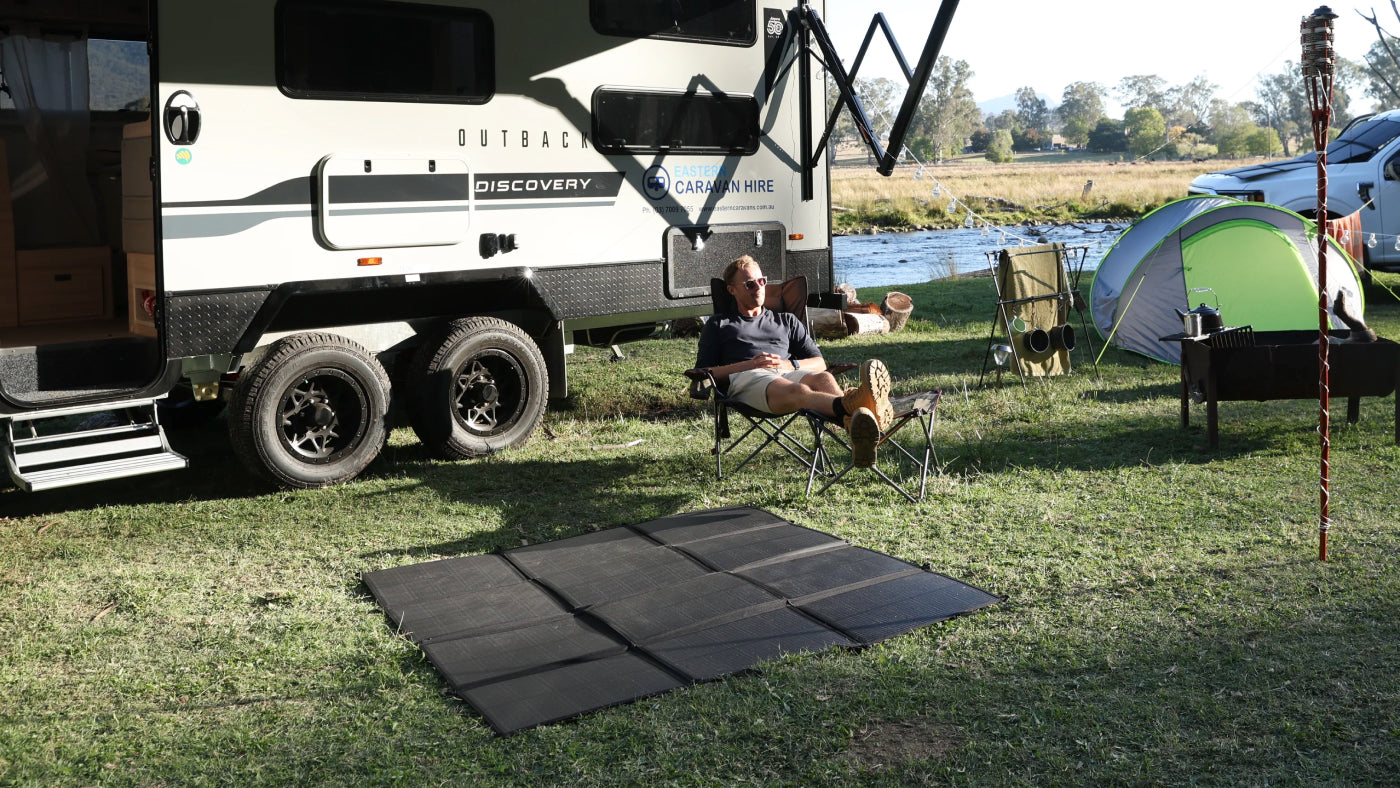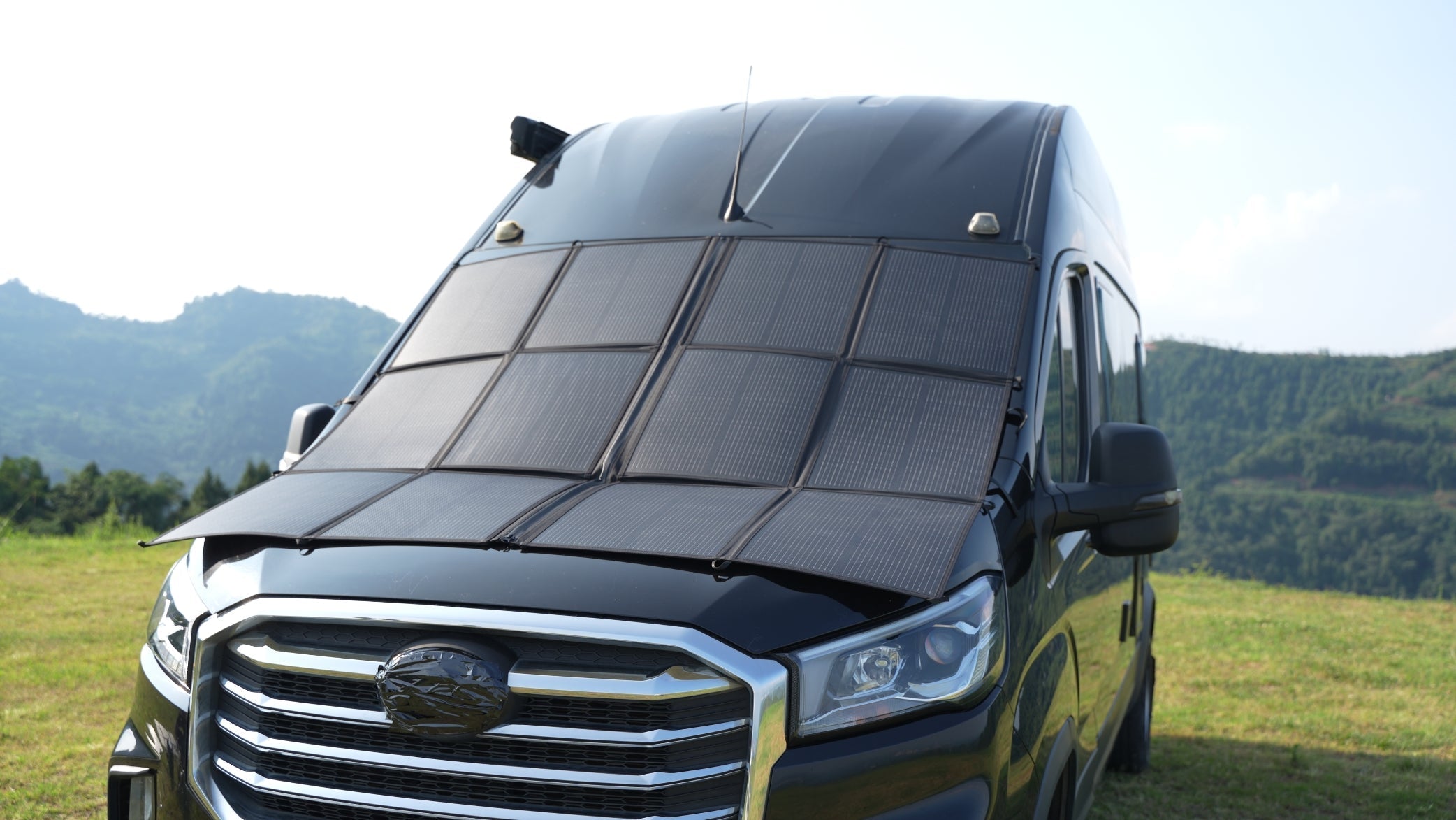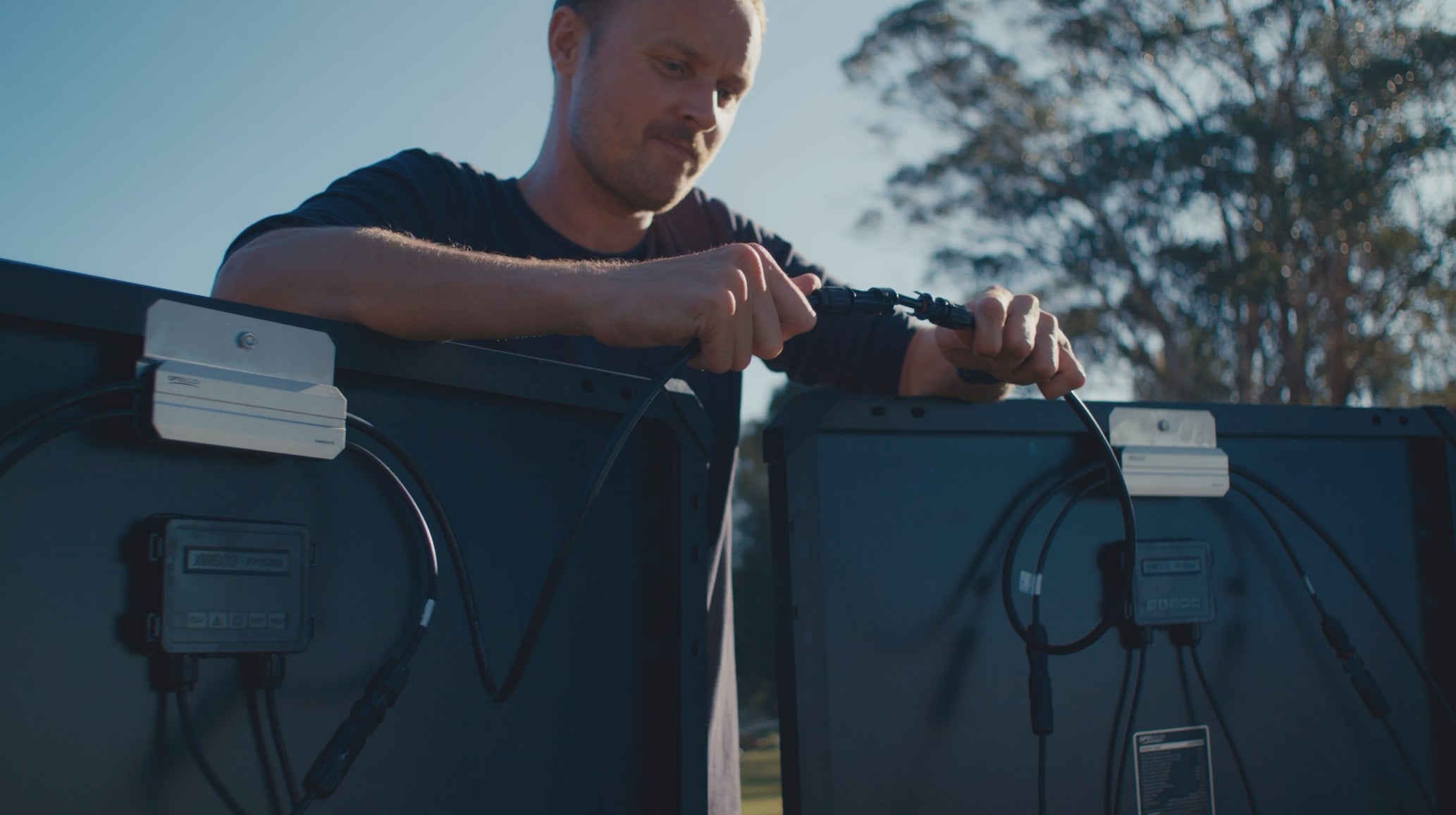For outdoor adventurers, a reliable off-grid power system provides a peace of mind. The ability to harness solar energy to power electronic devices in environments without grid access is essential. Given the wide range of solar panels available, it's crucial to understand the strengths and weaknesses of each type when choosing one.
Each type of solar panel has its own characteristics and best-fit applications. Portable solar panels are favored by campers due to their lightness and ease of setup. Rigid solar panels are a top choice for RV owners thanks to their high efficiency and durability. Lastly, flexible solar panels are valued for their adaptability and simple installation, making them suitable for a variety of environments.
This article provides an in-depth analysis of these three solar panel types from a user’s perspective, highlighting their pros and cons to help you make an informed decision and secure a stable power supply during your outdoor adventures.
Please note that all comparisons in this article assume equal surface area for each type of solar panel. This ensures fairness and accuracy, making performance differences easier to understand. Whether portable, rigid or flexible, all panels are evaluated under the same conditions.
The data in the following table is based solely on internal testing and does not represent all solar panels available on the market. As brands and models vary in design, materials, and performance, actual results may differ. The table should therefore be viewed as a reference framework to help you understand the relative performance of different types of solar panels.
|
Evaluation Dimension |
Portable Solar Panels |
Rigid Solar Panels |
Flexible Solar Panel |
|
Portability |
★★★★★(approx. 1-3kg) |
★(approx. 10-15kg) |
★★★★(approx. 4-6kg) |
|
Ease of installation |
★★★★★(unfold and connect to use) |
★(drilling or mounting required) |
★★★(bendable and flexible) |
|
Wind Resistance |
★(require counterweight) |
★★★★★(bolted) |
★★★(adhesive mounting) |
|
Efficiency* |
★★★★(18-20%) |
★★★★★(22%) |
★★(15-17%) |
|
Adaptability |
★★★(splash-proof) |
★★★★★(hail-proof) |
★★(prone to overheating) |
|
Lifespan |
★★★(5-7 years) |
★★★★★(25 years) |
★★(3-5 years) |
|
Annual Degradation |
~ 0.8% per year |
~ 0.5% per year |
~ 2.5% per year |
|
Thermal Degradation |
~ -0.40%/℃
|
~ -0.35%/℃ |
~. -0.45%/℃ |
*Power generation efficiency is influenced by the materials used in solar panels.
The following section is a detailed analysis of different panel types:
• Portable Solar Panels:These panels typically use a hinged design. While this makes them highly portable, it reduces the effective surface area by about 5–8%. As a result, although they can be set up quickly in a wide range of environments, the reduced effective surface area slightly lowers their overall power generation efficiency.
• Rigid Solar Panels:Usually encapsulated in glass, rigid panels offer high light transmittance (>91.5%), allowing more sunlight to pass through and be converted into electricity. In addition, monocrystalline silicon—commonly used in these panels—offers consistent manufacturing quality with minimal defect. This makes rigid solar panels an excellent choice when high-efficiency power output is the priority.
• Flexible Solar Panel:These panels are typically built on a polymer substrate, which has a lower light transmittance of around 83–87%. The reduced transmittance decreases photon absorption, lowering overall efficiency. Moreover, bending flexible panels during installation can cause microcracks, increasing electrical resistance. The resulting efficiency loss can reach up to 3%. While flexible solar panels are easy to install and adaptable to many surfaces, their power generation efficiency is somewhat compromised.
Portable Solar Panels
Advantages:
○ Portability – Lightweight and foldable, these panels are easy to store and carry. Whether on a hike, at a campsite, or in an RV, they can be transported with minimal effort.
○ Quick Installation – Simply unfold the panel and connect the cables to set up a functioning power system within minutes. This is especially useful for charging phones, lights, or small appliances when energy is needed quickly.
○ Adaptability – The panel angle can be adjusted to follow the sun’s direction, maximizing exposure and improving power generation efficiency in different weather conditions and environments.
○ Versatility – Portable panels can power a wide range of small devices, such as phones, GPS units, lights, and compact appliances, making them ideal for camping and short trips.
○ Cost-Effective – Generally more affordable than rigid solar panels, portable options are a good choice for users with budget constraints.
Disadvantages:
○ Limited Power Output – Typically used as single units, portable solar panels often cannot be connected in series or parallel. While effective for small devices, they are not suitable for powering larger appliances such as refrigerators or electric water heaters.
○ Lower Durability – Many portable panels lack strong weather resistance and may degrade faster under prolonged outdoor exposure. Potential issues include wear and tear, or performance loss, especially in extreme conditions.
Rigid Solar Panels
Advantages
○ High Efficiency – Rigid panels typically deliver higher power output and can be connected in series or parallel. With sufficient installation space, they can power energy-demanding appliances such as refrigerators and air conditioners, making them ideal for RVs or fixed camping setups.
○ Durability – Constructed with glass and aluminum frames, these panels offer strong resistance to impact and harsh weather. They can withstand extreme conditions such as strong winds, heavy rain, and high temperatures, ensuring long-term stable performance.
○ Long Lifespan – Thanks to their durability, rigid panels are more cost-effective over time. Many models have a lifespan of 25 years or more, reducing the need for frequent replacements and lowering maintenance costs.
○ Higher Photovoltaic Efficiency – Most rigid panels use high-efficiency monocrystalline silicon, allowing them to generate more electricity under the same sunlight exposure compared to other panel types.
Disadvantages
○ Bulky – Rigid panels are larger and heavier, making them less convenient to carry or reposition.
○ Complex Installation – Fixed installation with proper planning and measurements are required. Additional brackets and tools are often necessary, which can make setup challenging for users without technical experience.
○ High Initial Cost – While the cost per watt is lower in the long term, the upfront investment is relatively high, which may pose a barrier for budget-conscious users.
○ Limited Flexibility – Once installed, rigid panels are difficult to move or reinstall, reducing their adaptability for frequent travel.
Flexible Solar Panel
Advantages
○ Lightweight and Flexible – Their light weight and bendable design make them suitable for a wide range of installation scenarios, such as vehicle roofs, backpacks, and even irregular surfaces. This flexibility is especially useful for off-road vehicles and RVs.
○ Easy Installation – Flexible panels can be installed using adhesives or simple fasteners. This straightforward method reduces both installation effort and time.
○ Adaptability – Their ability to bend and adjust allows them to fit onto various mounting surfaces, maximizing sunlight absorption in spaces where rigid panels may not fit.
○ Ideal for portable devices – Thanks to their portability, flexible solar panels are ideal for mobile devices and setups such as portable power stations and camping equipment, providing power on the go.
○ Lower Initial Cost – Compared to rigid solar panels, flexible panels generally have a lower purchase price, making them a budget-friendly option.
Disadvantages
○ Lower Power Output – Flexible panels typically produce less electricity than rigid panels, limiting their ability to power larger appliances.
○ Lower Durability – While convenient, flexible panels are more prone to performance degradation from prolonged sun exposure, weather conditions, and poor heat dissipation (especially when adhesives are used). This can shorten their lifespan.
○ Fragile – Their delicate structure makes them vulnerable to damage from impacts or sharp bending, requiring careful handling.
○ Lower Conversion Efficiency – Compared to rigid panels, flexible solar panels generally have lower photovoltaic conversion efficiency, reducing their effectiveness under the same sunlight conditions.
Recommended Solar Panels for RVing, Off-Road Vehicles, and Camping
When selecting a solar panel, it’s important to consider your specific environment and power needs to ensure the panel you choose provides optimal performance. Below are recommendations based on different outdoor scenarios.
For RVers: Rigid Solar Panels
Rigid solar panels are ideal for RVs due to the following reasons:
• Large, sturdy roofs – RV roofs provide ample space and structural support, making them perfect for fixed installation of rigid panels.
• Stable, high-power output – Capable of running high-power appliances such as refrigerators and air conditioners.
• Durability – Resistant to extreme weather conditions, including strong winds, heavy rain, and high temperatures.
• Long service life – With proper installation, rigid panels can last for decades, making them cost-effective over time. While installation is more complex, once set up, they provide reliable power for extended trips.
For Off-Roaders and Campers: Portable or Flexible Solar Panels
Portable and flexible panels are more suitable for off-road vehicles and camping due to their lightweight and adaptable designs:
• Portable solar panels – Lightweight, foldable, and easy to carry, making them convenient for quick setups at different locations. Users simply unfold and connect the panel to power small devices such as phones and lights.
• Flexible solar panels – Lightweight and bendable, these panels adapt to irregular surfaces, such as vehicle roofs, allowing direct attachment and easy installation. They can be adjusted to maximize sunlight exposure, providing greater flexibility in diverse environments.
Usage Tip: For short trips and quick camping setups, portable panels are ideal. For extended stays in cabins or RVs, rigid panels offer a more stable and high-capacity power supply.
Choosing the Right Panel
• Portable panels – Best for lightweight, quick deployment, and temporary power needs.
• Rigid panels – Ideal for high-power demand and long-term stable operation.
• Flexible panels – Offer adaptability, easy installation, and suitability for irregular surfaces.
Selecting the appropriate solar panel for your scenario enhances your off-grid experience, ensuring a reliable power supply and greater convenience during outdoor activities.
OptiSolex Solar Solutions
OptiSolex’s Solar Panel 200 (rigid) and SolarBag 400 (portable) are designed to meet diverse off-grid power needs:
• High Conversion Efficiency – Both models boast up to 25% photovoltaic conversion efficiency. Optimized for low-light conditions, they generate 3–7% more electricity than comparable panels, ensuring sufficient power even in overcast or dim environments.
• Monocrystalline Silicon Technology – Maintains efficient energy conversion even in high temperatures, enhancing overall performance across various climates.
• Combination Kits – Include all necessary components for installation, simplifying setup and allowing rapid deployment.
SolarBag 400 Specific Features:
• Features a zipper design splitting into two 220W panels.
• Each panel has an independent output cable for series or parallel connection.
• Can be used separately to power multiple devices simultaneously, offering flexible solutions for varying power needs.
Summary:
By choosing OptiSolex Solar Panel 200 and SolarBag 400, you gain a stable, reliable, and convenient off-grid power supply, enhancing your outdoor activities in RVs, off-road vehicles, or camping setups.




